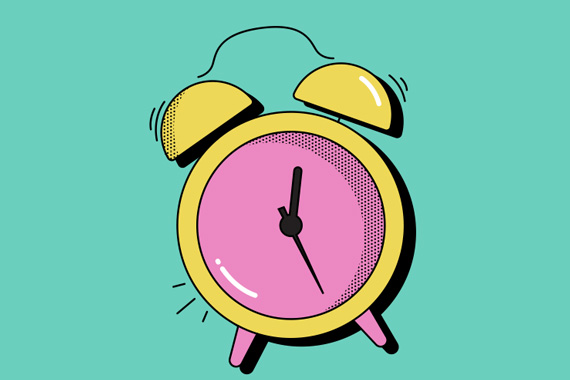“For 15 years, I've seen surgeons or judges vomit between two cases, or people who had to change jobs or lost their jobs, but all with little acknowledgment,” says neurologist Elizabeth Leroux. (Image: 123RF)
RHéveil-matin is a daily column in which we provide managers and their employees with inspiring solutions to start their day right. While sipping your favorite beverage, discover new tips to make your 9@5 productive and motivated.
Waking up in the morning. Migraine is more than just a bad headache, it is a sometimes debilitating neurological disease that can significantly harm the productivity and career development of people who suffer from it. However, this condition is rarely taken seriously by companies that have a crucial role to play in their employees’ healing journey.
“It is recognized by the World Health Organization as the leading cause of disability in people under 50 years of age. […] “Because it is invisible, we rely on the description of the person, and there is nothing easier than assuming that he has nothing and just wants to take a day off.”
On the contrary, migraine sufferers who come to her clinic try their best to continue working despite their symptoms, says the woman who will participate in the panel discussion “Migraines, Headaches and Headaches: A Women's Business?” Organized by the Federation of Specialized Doctors of Quebec on March 8, 2024.
“Over the course of 15 years, I have seen surgeons or judges vomit between two cases, or people who had to change jobs or lost their jobs, but all with little acknowledgment,” she says. I have a patient who once told me that he missed his cancer, because at least at the time he was taken care of.
Initiating this change in perception, especially among the business community, is a major concern for those concerned about this issue that affects more than one in 10 Canadians, and three times more women than men.
“Every day I hear horror stories from patients who have been waiting to see neurologists for two years and simply hope they will be believed,” adds the founder of Migraine Québec.
She lamented that Quebec's health system remains poorly supervised, and that this invisible evil has major economic consequences. In fact, each year, chronic migraines cost $25,669 per person in treatment and lost productivity, according to a 2022 Canadian study.
Debilitating symptoms
Unlike simple headaches, migraines cause recurring headaches that are accompanied by neurological symptoms such as sensory intolerance, nausea and vomiting, or even loss of vision, explains the doctor who practices at the Montreal Neurology Clinic.
We talk about chronic migraines when these attacks occur more than 15 days a month. According to a 2021 study of 1,119 Canadians suffering from migraines, more than half of the participants fall into this category.
“It's a continuum of distress. The more you're affected, the more your job will impact your personal and professional life,” says Elizabeth Leroux.
In the workplace, several factors can contribute to triggering such a crisis. LED lighting, certain window blinds, visually crowded or hot environments, or even the smell of a colleague's strong perfume can all serve as a spark plug for a migraine.
The same applies to stressful or emotionally demanding work environments.
“The teacher cannot drink a lot of water, because she cannot be absent and leave her class alone. Dehydration causes migraines. People with migraines are sometimes seen as moody. However, we cannot tell an asthma patient that he has asthma because he cannot be exposed to For pollen.
This is why the neurologist calls for more education within organizations and human resource managers. This will not only make it possible to recognize and understand this neurological disease, but will also provide the necessary facilities to increase the productivity of people suffering from it.
The employer must also offer insurance plans that cover these treatments to alleviate this financial burden, but also provide access to care that is difficult to obtain, especially for younger or otherwise healthy patients.
“If you have employees who suffer from migraines, you should encourage them to consult [ des professionnels de la santé …] She adds that available resources such as Migraine Québec. Beyond accommodation, we want them to heal. I have patients who achieve 50% to 75% treatment results and return to the workforce or full time.
She confirms that this support is clear in light of the labor shortage.
To work remotely or not to work remotely, this is the question that is causing turmoil in many companies.
Share your opinion with our readers by filling out this form.

“Music guru. Incurable web practitioner. Thinker. Lifelong zombie junkie. Tv buff. Typical organizer. Evil beer scholar.”









More Stories
Quebec | Museum of National History on the ashes of blue spaces
Espace du Parvis becomes Parc des Pékans
Why do leafhoppers reflect little light?